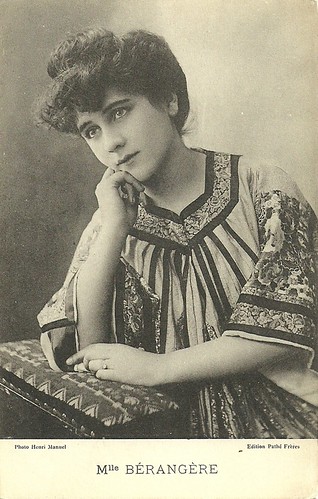
Jeanne Bérangère. French postcard by Edition Pathé Frères. Photo: Henri Manuel. A difficulty with this card, which is easily found online as well, is that it dates from around 1910-1914. French stage and screen actress Jeanne Bérangère (1864-1927) was born in 1864, so in 1914 she must have been around 50. And the woman on the postcard seems much younger. We could not trace whether Pathé used a pre-1900 photo, a photo of a relative with the same name (a daughter?), or just a photo of somebody else.
Update 5 November 2017:
Happily, Marlene 'Sherlock Holmes' Pilaete solved the riddle: "In fact, there were two “Bérangère” in the French silent movies. The lovely lady on the postcard (real name: Jeanne Chatelain) was born in 1887 and died in 1946. She was a Pathé star at the beginning of the 1910s. She came back to the screen for two talkies in the thirties. The other Bérangère (real name: Françoise Béraud) was born in 1864 and died in 1928. She was active in movies from the end of the 1910s until her death. Several websites, including IMDb, have mixed the two actresses up." Thanks, Marlène!

Little Moritz. French postcard by Edition Pathé Frères.

Andrée Pascal. French postcard by Edition Pathé Frères. Photo: Félix.
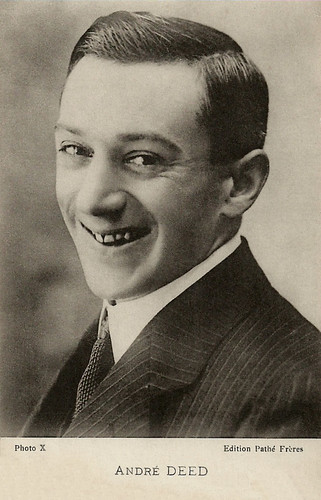
André Deed. French postcard by Edition Pathé Frères. Photo: X.
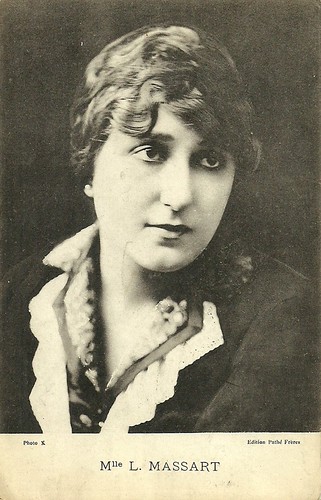
Léontine Massart. French postcard by Edition Pathé Frères. Photo: X.
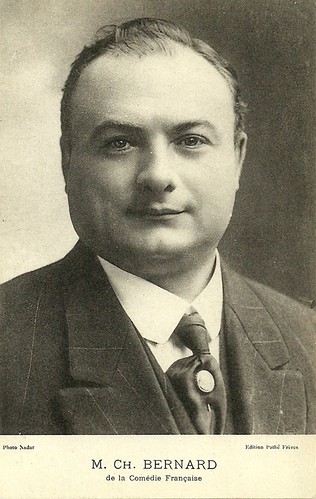
Léon Bernard. French postcard by Edition Pathé Frères. Photo: Nadar. The Ch. must be a mistake, as this is clearly French stage and screen actor and also theatre director Léon Bernard.
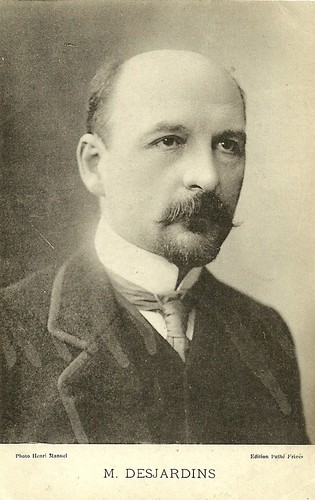
Maxime Desjardins. French postcard by Edition Pathé Frères. Photo: Henri Manuel.
One of the first feature-length films about Jesus
In 1896, Pathé Frères began using the camera developed by the Lumière brothers and then Pathé set about to design an improved studio camera and to make their own film stock. From 1901, Pathé teamed up with director and later manager Ferdinand Zecca who oversaw the creation and production of original Pathé Frères films.
Pathé opened sales agencies all over the world, selling projectors, films and equipment. In 1902 it opened a glass house studio near Paris, and in 1904 two other ones. At Joinville-le-Pont, also near Paris, a series of factories were built to produce cameras and projectors and to develop film stock, with a separate section for colouring films.
From 1905 on, the company employed a specialised studio staff: screenwriters, directors, cinematographers and other technicians. In 1905 Pathé produced some 12.000 meters of film stock per month of positive film, by now mostly fiction films. Zecca explored many themes from the mundane to the fantastic. In À la conquête de l'air/Conquering the Skies (Ferdinand Zecca, 1901), a strange flying machine, called Fend-l'air, was seen flying over the rooftops of Belleville. By using trick photography, the one-minute short was notable in being the first aviation film, predating the flight by the Wright Brothers by two years.
Zecca also pioneered one of the first crime dramas, Histoire d'un crime/History of a Crime (Ferdinand Zecca, 1901), stylistically innovative in its use of superimposition. The story was of a man condemned to death, awaiting execution with his crimes appearing on his cell wall. The film is an early example of flashbacks as a film device. Other Pathé films included comedies, trick films or fairy tales, such as Les Sept châteaux du Diable/The Seven Castles of the Devil (Ferdinand Zecca, 1901), and La Belle au bois dormant/Sleeping Beauty (1902).
Pathé also produced social dramas like Les Victimes de l'alcoolisme/Alcohol and Its Victims (Ferdinand Zecca, 1902), Au pays noir/Down in the Coal Mines (Lucien Nonguet, Ferdinand Zecca, 1905) and reconstructions of actual events, the most famous being La Catastrophe de la Martinique/Martinique Disaster (Ferdinand Zecca, 1902). Zecca also acted in many of his films.
Between 1900 and 1907, Zecca oversaw the production of hundreds of Pathé films from many important Pathé directors including Lucien Nonguet, Gaston Velle, Albert Capellani, Louis J. Gasnier, André Heuzé and Henri Pouctal. Zecca also acted, directed, produced, and, on occasion, wrote films. These films were at most 300 meters in length, so max. 15 minutes of screening time (which is already quite longer than the single-take films of Lumière, and consisted of various shots edited together).
La Vie et la passion de Jésus Christ/Life and Passion of the Christ (Lucien Nonguet, Ferdinand Zecca, 1903) was, at a running time of 44 minutes, one of the first feature-length films about Jesus. Production grew massively: in 1906 the output of positive film stock tripled that of the year before. In 1906, Spaniard Segundo de Chomón arrived at the Pathé studio and assisted Zecca with photography and special effects. He started to colour films, such as Vie et Passion de N.S. Jésus Christ/Life and Passion of Christ (Ferdinand Zecca, 1907), shot in four parts with 38 scenes, 990 metres long. At first, the films were hand-coloured, and later semi-mechanically coloured with stencils, a method also used for colouring postcards.
After Pathé bought the rights to George Méliès's Star films, Zecca started editing the Méliès films. Film production went from 70 titles in 1901 to 500 in 1903. After 1906, mass film production gradually eased as longer films were produced. Pathé and Méliès started to work together in 1911. Georges Méliès's first film to be distributed by Pathé was the fantasy-comedy Les Aventures de baron de Munchhausen/Baron Munchausen's Dream (Georges Méliès, 1911).
Pathé Frères filmed numerous short subjects, the majority of which are sensational criminal adventures, melodramatic love stories, and comedies. In 1912 Pathé produced its first feature film, Les Misérables (Albert Capellani, 1912), a four-reel screen version of the novel by Victor Hugo starring Henry Krauss as Jean Valjean and Maria Fromet as Cosette. In 1912, Pathé appointed Alfred Machin to develop the first studio films at Sint-Jans-Molenbeek, Château Karreveld, Belgium. And in 1914, Pathé Frères studios in the United States released the first episodes of The Perils of Pauline (Louis J. Gasnier, Donald MacKenzie, 1914) featuring Pearl White, one of the earliest and best-remembered screen serials.
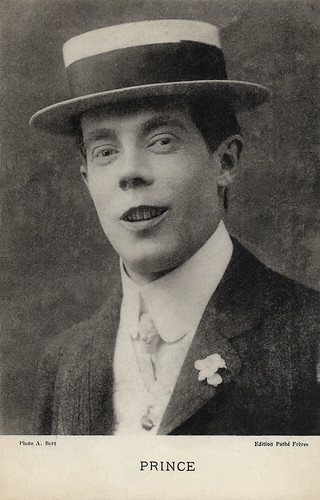
Charles Prince. French postcard by Edition Pathé Frères. Photo: A. Bert.

Madeleine Céliat. French postcard by Edition Pathé Frères. Photo: Félix.
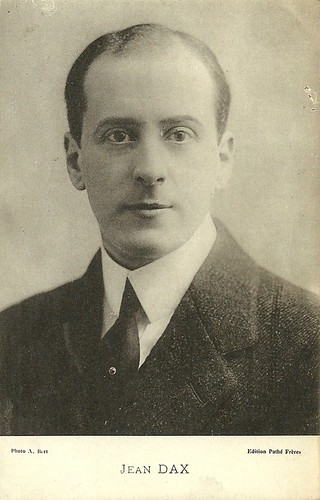
Jean Dax. French postcard by Edition Pathé Frères. Photo: A. Bert.
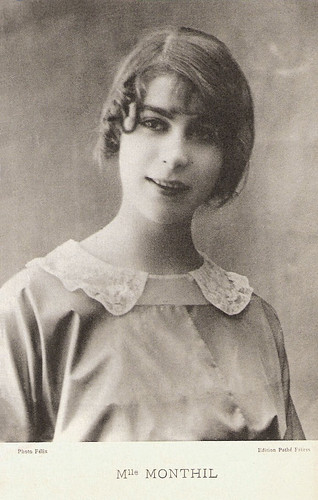
Marcelle Monthil. French postcard by Edition Pathé Frères. Photo: Félix.
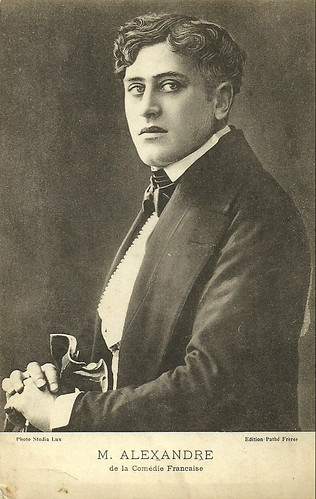
René Alexandre. French postcard by Edition Pathé Frères. Photo: Studio Lux.
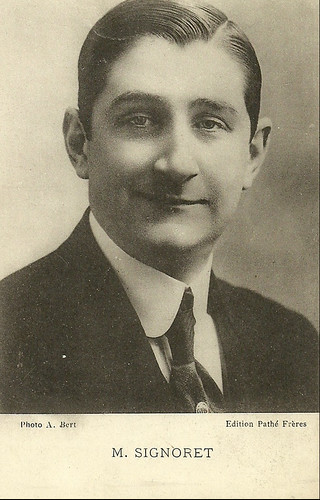
Gabriel Signoret. French postcard by Edition Pathé Frères. Photo: A. Bert.

Maria Fromet. French postcard by Edition Pathé Frères. Photo: Félix.
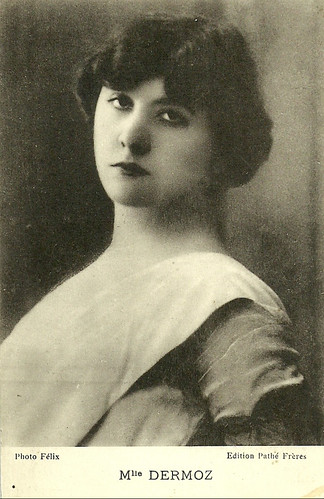
Germaine Dermoz. French postcard by Edition Pathé Frères. Photo: Félix.
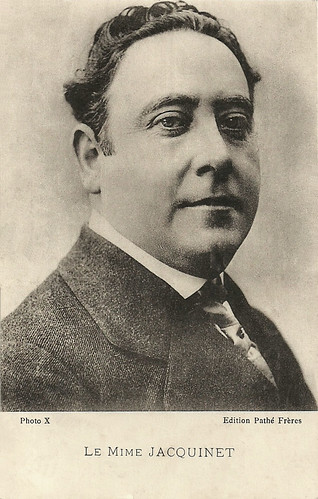
Jean Jacquinet (Le mime Jacquinet). French postcard by Edition Pathé Frères. On the back imprint, publicity for the West-Java Bioscope at Senen (now part of Jakarta), Dutch East Indies (now Indonesia).
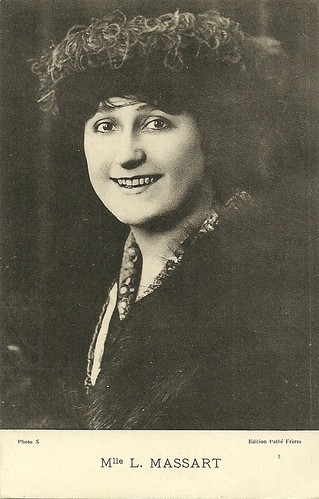
Léontine Massart. French postcard by Edition Pathé Frères. Photo: X.
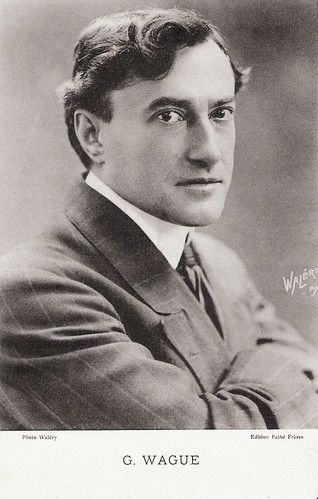
Georges Wague. French postcard by Edition Pathé Frères. Photo: Waléry, Paris.
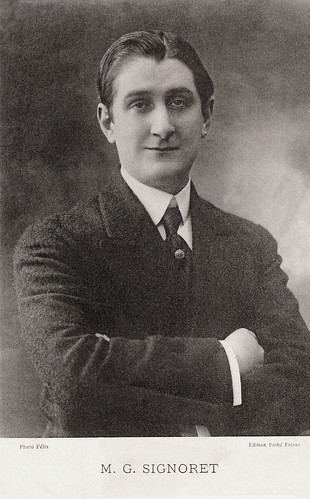
Gabriel Signoret. French postcard by Edition Pathé Frères. Photo: Félix.
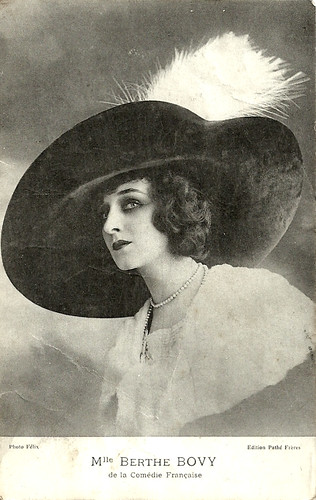
Berthe Bovy. French postcard by Edition Pathé Frères. Photo: Félix. Caption: Mlle Berthe Bovy of the Comédie Française.

Max Linder. French postcard by Edition Pathé Frères.
Check out other postcard blogs
at Postcard Friendship Friday!
Sources: Wikipedia, Eyefilm and IMDb.

1 comment:
Hello, Paul! What an interesting blog entry. I read every word and was fascinated. I was equally fascinated with the faces of these long-gone actors and actresses.
It kind of boggled my mind the other day, when I asked a young person what they thought of John Wayne and Jimmy Steward--stars from when I was younger.
"Who?" she queried. All I could do was laugh. Fame is indeed fleeting. Thank you so much for your research on all of these folks. :D
Happy Postcard Friendship Friday!
Post a Comment